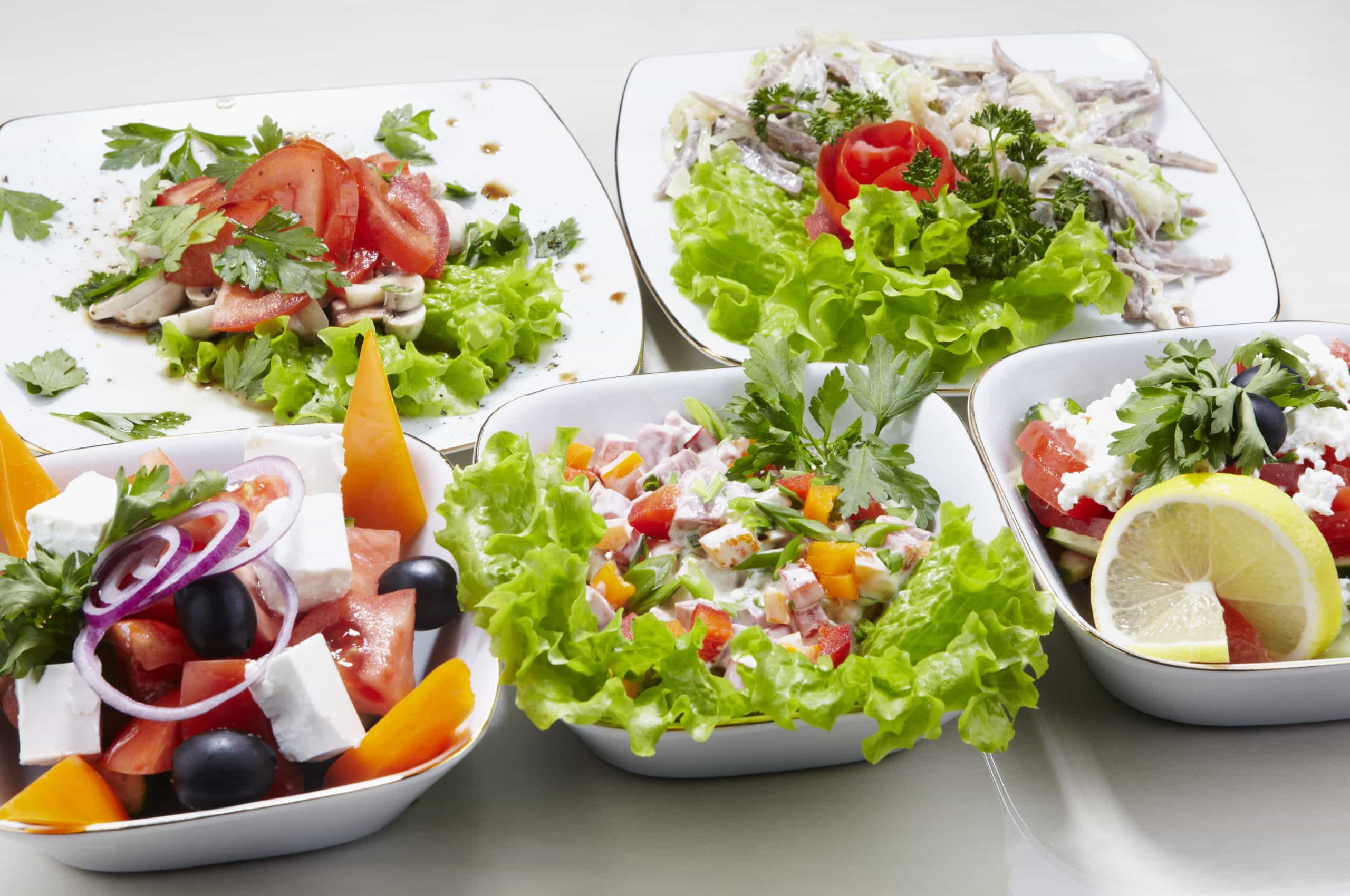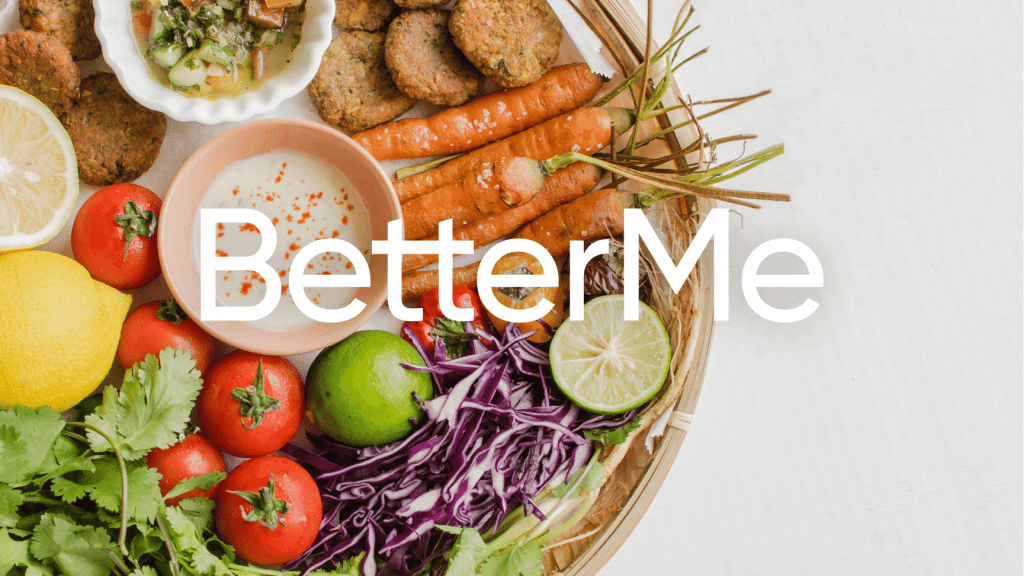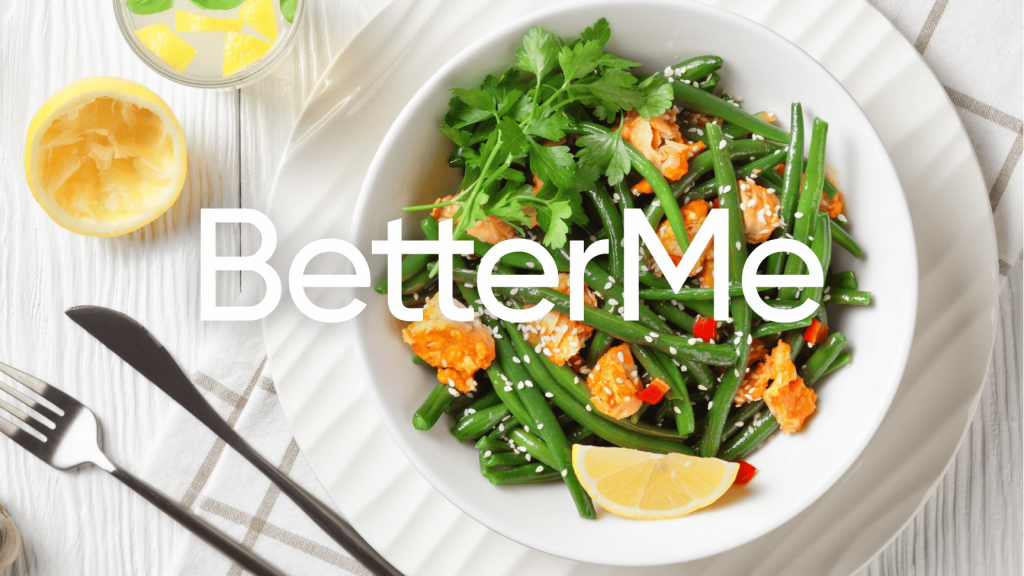If all that comes to mind when you hear the word “salad” is a boring bowl of iceberg lettuce and a few sliced tomatoes, you’re in for a treat!
Salads have come a long way from being just a side dish. It’s time to place salads firmly in the spotlight and appreciate them as the vibrant, crunchy, and deliciously diverse dishes they can be.
In this blog post, we’ll be exploring seven types of salad that will add color to your plate while also introducing an exciting array of textures and flavors to your meals. From the sweet and tangy combinations that are found in fruit salads to the hearty wholesomeness of grain salads, there’s something for everyone.
So, grab your salad spinner, put on your apron, and get ready to dive into a world of fresh, crisp, and nutritious goodness.
Read more: Types Of Vegetables And How To Cook Them For Ultimate Nutrition In 2023.
What Are The Main Classifications of Salads?
Salads can be classified in several ways based on how they are served, their ingredients, and the role they play in a meal. Remember, these are broad categories, and many salads can fit into more than one category depending on how they’re served. Here are the main classifications:
Appetizer Salads
These salads are light and refreshing and are generally served at the start of a meal to stimulate the appetite. Examples include a simple green salad or a tangy fruit salad.
Accompaniment Salads
These salads are designed to complement the main dish they are served with. Coleslaw or a Greek salad fall into this category.
Main Course Salads
These are hearty salads that often include proteins such as chicken, beef, or beans, which makes them substantial enough to serve as a full meal. Cobb salad and Caesar salad with grilled chicken are examples of this salad type.
Side Dish Salads
Similar to accompaniment salads, these salads are served as a side dish with a meal. They can be made from vegetables, grains, or pasta, such as a classic potato salad or pasta salad.
Separate Course Salads
These salads are served after the main course and before dessert as a means of refreshing the palate. A light mixed green salad with a vinaigrette dressing is often used for this purpose.
Dessert Salads
As its name suggests, these are sweet salads that are served as dessert. They often include ingredients such as fruit, whipped cream, nuts, cheese, and sometimes sweetened gelatin.
Examples include ambrosia salad and Waldorf salad (when served with sweet marshmallows or whipped cream).
If you’ve mustered up the courage to crush your weight loss goal, let Betterme take the sting out of this demanding process. Our app will help you restructure your habits, remold your life and crank up your fitness results!
How Many Types Of Salad Are There?
There isn’t a definitive number of salad types as it can vary greatly depending on ingredients, preparation methods, and regional variations. However, salads are generally categorized into the following 7 main types:
- Green Salads: These are typically made with leafy greens such as lettuce, spinach, or arugula.
- Fruit Salads: These contain various types of fruit and are often mixed with a sweet or tangy dressing.
- Pasta Salads: These include cooked pasta as a main ingredient and are generally chilled and mixed with vegetables or proteins.
- Grain Salads: These are made with grains such as quinoa, bulgur, or barley.
- Bound Salads: This category includes salads such as potato salad, chicken salad, or egg salad where ingredients are bound together with a thick dressing.
- Dinner Salads: These are hearty salads that often include proteins and substantial ingredients to make them filling enough to be considered a meal.
- Dessert Salads: These are sweet salads that are often made with gelatin, fruit, and sweet creamy dressings.
Of course, within each category, there are countless variations and possibilities. For example, you have Caesar Salad, Greek Salad, Caprese Salad, Cobb Salad, Niçoise Salad, Waldorf Salad, and many more. So, the number of salad types is virtually endless.
What Are The Most Common Salads?
The most common salads from a variety of cuisines are:
Caesar Salad
Top of the list of classic salad names is the Caesar salad. This was invented by an Italian chef in Tijuana, Mexico and typically includes Romaine lettuce, croutons, parmesan cheese, and a special dressing that is made with ingredients including garlic, anchovies, olive oil, and egg yolk.
Greek Salad (Horiatiki Salata)
A colorful medley of tomatoes, cucumbers, onion, feta cheese, and Kalamata olives, this salad is typically dressed with olive oil.
Caprese Salad
An Italian salad made with ripe tomatoes, fresh mozzarella, sweet basil, and generally drizzled with olive oil and balsamic glaze.
Cobb Salad
An American garden salad that’s normally made with chopped greens, tomato, crispy bacon, boiled egg, chicken, chives, Roquefort cheese, and avocado. It’s among the most common types of salad to include chicken.
Waldorf Salad
A classic American salad that is made with fresh apples, celery, grapes, and walnuts, dressed in mayonnaise, and generally served on a bed of lettuce.
Nicoise Salad
A French salad made with tuna, hard-boiled eggs, Niçoise olives, and various vegetables.
Macaroni Salad
A salad that is very popular in the United States, this is made with cooked elbow macaroni pasta and generally prepared with mayonnaise.
Coleslaw
A salad that consists of finely shredded raw cabbage with a salad dressing, commonly vinaigrette or mayonnaise.
Panzanella
An Italian bread salad that includes chunks of soaked stale bread and tomatoes, and sometimes onions and basil, which is dressed with olive oil and vinegar.
Read more: Olive Oil As Lube: Pros, Cons, And Alternatives.
Olivier Salad
This is also known as Russian Salad and is a traditional salad dish from Russia, but it is also popular in other former Soviet countries. The salad contains diced boiled vegetables (potatoes, carrots, Brussels sprouts, and peas) and eggs and is dressed with mayonnaise.
Potato Salad
A classic dish made from boiled potatoes mixed with mayo, mustard, onions, and celery. There are several global variations of this dish.
Tabbouleh
A Levantine vegetarian salad made mostly with finely chopped parsley, tomatoes, mint, onion, and bulgur and seasoned with olive oil, lemon juice, salt, and pepper.
Chef’s Salad
A hearty salad that generally includes hard-boiled eggs, a variety of meats including ham and turkey, cheese, cucumbers, and tomatoes on a bed of leafy greens.
Spinach Salad
This is often served with bacon, hard-boiled eggs, raw mushrooms, and a warm vinaigrette dressing.
Taco Salad
A Tex-Mex dish that includes ingredients that are similar to those inside a taco: lettuce, salsa, cheese, sour cream, and guacamole, all served in a tortilla shell bowl. It is one of the most common types of salad with meat.
Seven-Layer Salad
A unique salad that’s layered with peas, chopped onions, celery, green pepper, sliced hard-boiled eggs, crispy bacon, and cheese that is topped with a mayonnaise-based dressing.
Fruit Salad
A dish consisting of various types of fruit, sometimes served in a liquid, either the juices of the fruits in it or a syrup.
Ambrosia Salad
A variation of fruit salad that includes coconut and often involves whipped cream, sour cream, or yogurt.
Pasta Salad
A dish that is prepared with one or more types of pasta, normally chilled, and most often tossed in a vinegar, oil, or mayonnaise-based dressing.
Bean Salad
A salad that is typically made with various cooked beans – green beans, yellow wax beans, garbanzo beans, kidney beans – and fresh raw onions, peppers, and/or other vegetables, tossed in a vinaigrette or vinegar-based dressing.
BetterMe app will kick you out of the mental funk, shake off your extra weight, rid you off your energy-zapping habits, and help you sculpt the body of your dreams. Intrigued? Hurry up and change your life for the better!
What Are The 4 Basic Parts of a Salad?
In its most basic form, a salad can be broken down into four key components that work together to create a harmonious dish. Understanding these parts can help you create your own salad variations.
Base
The base of the salad is generally a type of leafy green. This can include lettuce, spinach, kale, arugula, or mixed salad greens. The base provides volume and a crisp texture that contrasts well with the other ingredients. Some salads use grains, pastas, legumes, potatoes, or other vegetables as their base.
Body
The body of the salad is where you add substance. This can include a variety of vegetables, fruits, grains, proteins (such as chicken, tofu, eggs, or beans), cheese, or nuts. This part of the salad is where you can let loose with your creativity and personalize the dish according to your taste preferences and dietary needs.
Dressing
The dressing is a crucial part of a salad as it helps tie all the ingredients together. It’s typically a mixture of oil and an acid (such as vinegar or lemon juice), but it can also include other flavorings such as herbs, spices, honey, yogurt, or mustard. The dressing adds moisture and flavor and enhances the taste of all the other ingredients.
Garnish
The garnish is the final touch that is added to a salad. This is usually something that adds an extra hint of flavor, color, or texture.
Garnishes can include fresh herbs, croutons, seeds, nuts, dried fruit, or a sprinkle of grated cheese. In addition to adding aesthetic appeal, a garnish contributes to the overall taste and texture of a salad.
FAQ
Why is salad important?
Salads are important as they’re high in fiber, which is good for the digestive system and helps you feel full after eating a meal (1). They’re full of vitamins and minerals that contribute to overall health.
In addition, salads are low in calories but high in volume, which makes them a good choice for weight management. They also provide antioxidants and other immune-supporting nutrients (2).
What types of lettuce do you use for salads?
There are several types of lettuce you can use in salads.
The most common are Romaine lettuce, which is known for its crisp texture and slightly bitter flavor; Iceberg lettuce, which has a crisp texture but less flavor and fewer nutrients; Butterhead lettuce, including Boston and Bibb lettuces, which have tender, buttery-textured leaves; and Leaf lettuce, such as red or green leaf, which has soft, flavorful leaves. Other leafy greens or any type of vegetable can also be used as the base of your salad if you prefer.
How can you make different types of salad?
To make different types of salad, start by choosing a base such as lettuce, spinach, or pasta. Then you can add a variety of vegetables, fruits, proteins, or grains for substance.
Next, dress the salad with a mixture of oil and an acid such as vinegar or lemon juice, and add herbs or spices for extra flavor. Finally, garnish with ingredients such as fresh herbs, croutons, or nuts.
What are some simple salads?
Simple salads often involve minimal ingredients and preparation.
Examples include a basic garden salad with lettuce, cucumber, tomato, and carrot; a Caprese salad with mozzarella, tomatoes, and basil; a Caesar salad with Romaine lettuce, croutons, parmesan cheese, and Caesar dressing; or a Greek salad with cucumbers, tomatoes, olives, feta cheese, and a simple vinaigrette.
The Bottom Line
Boost your diet with our guide to seven vibrant, nutrient-packed salads. From the classic Caesar to the exotic Greek, these salads promise a riot of colors and textures and a bounty of vitamins and minerals. It’s time for you to embrace the crunch and make salads an exciting part of your meals!
DISCLAIMER:
This article is intended for general informational purposes only and does not serve to address individual circumstances. It is not a substitute for professional advice or help and should not be relied on for making any kind of decision-making. Any action taken as a direct or indirect result of the information in this article is entirely at your own risk and is your sole responsibility.
BetterMe, its content staff, and its medical advisors accept no responsibility for inaccuracies, errors, misstatements, inconsistencies, or omissions and specifically disclaim any liability, loss or risk, personal, professional or otherwise, which may be incurred as a consequence, directly or indirectly, of the use and/or application of any content.
You should always seek the advice of your physician or other qualified health provider with any questions you may have regarding a medical condition or your specific situation. Never disregard professional medical advice or delay seeking it because of BetterMe content. If you suspect or think you may have a medical emergency, call your doctor.
SOURCES:
- Health benefits of dietary fiber (2009, pubmed.gov)
- Health Benefits of Fruits and Vegetables (2012, nih.gov)










